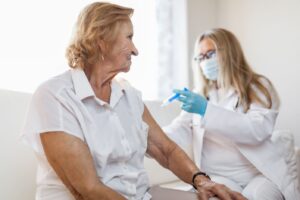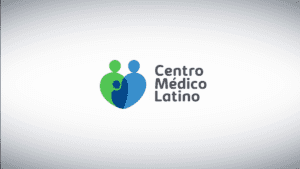Breast cancer is a condition affecting 19.2 million American women every year. While it is devastating if it’s not caught until the later stages, early detection often means recovery and a relatively normal life. One of the most important things you can do for your health is to get regular mammograms at Centro Medico Latino in Charlotte, NC.
What Is the Right Age to Start Getting Mammograms?
Women should start getting mammograms between the ages of 40 and 44. Your primary care physician can give you a better idea regarding when you should come in for regular testing based on your family history and medical history.
You may want to come in for a mammogram combined with an MRI if you notice changes in your breast tissue. For example, you should come in for an initial evaluation if you notice nipple discoloration, abnormal lumps in your breast or underarm, or dimpling of the skin. During your initial evaluation, we will provide you with a comprehensive list of symptoms to look out for.
How Frequently Should I Come for Testing?
We recommend coming in for your first mammogram based on the recommendation of your primary care physician. From that point forward, you should come in for annual testing. While the recommendation of coming in annually is a good rule of thumb, there are exceptions.
For example, you should come in for an annual mammogram between the ages of 45 and 54. However, once you turn 55, you may come in for annual imaging tests or come in every other year. Whether you should still come in annually depends on several factors, including your risk level.
How Often Should I Examine My Own Breasts for Cancer?
While most women don’t need to get annual mammograms until they’re 40, some women need to come in much sooner. When a woman gets her first Pap smear at the age of 21, she will also get her first physical breast exam. At this point, she should start giving herself a physical examination every month.
If the results of the first physical examination indicate that there is no breast cancer, a baseline is established regarding what normal breast tissue looks and feels like. Touch and feel your breasts and underarms carefully to see if you notice any changes. If you’re not sure if your tissue is abnormal, come in promptly for a mammogram.
What Are the Risk Factors of Breast Cancer?
There are over a dozen risk factors for breast cancer. While there are some risk factors you can change, most of them you can’t. For example, your risk of developing breast cancer increases with age. Most women aren’t diagnosed with breast cancer until after age 50. Reproductive history also plays a major role.
Women who started menstruating before the age of 12 or stopped menstruating after the age of 55 are at higher risk due to prolonged exposure to high levels of estrogen. Another risk factor you can’t control is your genetics. If you have inherited certain genetic mutations, such as BRCA1 or BRCA2, you are at a higher risk of developing breast cancer.
Family History
One of the most significant risk factors of developing breast cancer is having a first-degree relative who developed breast cancer. For example, if your mom, sister, or daughter has been diagnosed with breast cancer, you are more likely to be diagnosed with breast cancer at some point in your life.
Furthermore, you are at a higher risk of developing breast cancer if you have several family members who aren’t directly related to you who have had breast cancer. This is because genetic mutations can be passed down every generation.
Personal Medical History
Your personal medical history also tells us a lot about your risk of developing breast cancer. If you have had breast cancer in the past, there is a very high probability that you will develop breast cancer again. Furthermore, several non-cancerous breast diseases, like atypical hyperplasia, increase your risk of developing breast cancer.
Which Risk Factors Can I Change?
The easiest way to mitigate the risk of developing breast cancer is to stop drinking alcohol. Research shows that drinking more than one unit of alcohol per day significantly increases your risk of breast cancer. Similarly, exposing yourself to other harmful chemicals, like tobacco byproducts, increase your risk of breast cancer.
A harder risk factor to change is the shift you work. Recent research has revealed a link between working nights and an increased risk of breast cancer. Furthermore, your reproductive history, the type of hormones you take, your body fat percentage, and your physical activity level can change your risk of developing breast cancer.
How Is Breast Cancer Treated?
Breast cancer treatment depends on the stage of breast cancer you have been diagnosed with. Stages refer to where the cancer cells are found in your body. For example, stage 0 breast cancer indicates cancerous cells found only in the breast without invading surrounding breast tissues. Stage I breast cancer describes moderately invasive breast cancer.
Breast cancer stages go all the way up to stage IV, which indicates invasive breast cancer that has spread far beyond the lymph nodes. Chemo is recommended in nearly every case of stage IV breast cancer. Radiation is usually recommended to target other parts of the body, such as the brain. Hormonal therapy is recommended if the cancer is hormone-receptor-positive.
What Is a Mammogram?
A mammogram is an X-ray of a woman’s breast designed to detect breast cancer up to three years before any symptoms can be seen or felt. There is no better diagnostic test for breast cancer. It is performed while standing in front of an X-ray machine using two special plastic plates.
First, a vertical image of one breast will be taken by lying your breast flat on a plastic plate and pressing it from the top with a second plate. Then, a horizontal image of your breast will be taken with your breast being pressed from the left and right sides. Finally, the entire process is repeated to get two images of your other breast.
How Should I Prepare for a Mammogram?
If your menstrual cycle is regular, schedule your mammogram for the week or two after your period is over. The results can be skewed if the images are taken in the week leading up to menses or during your period as your breasts may be swollen.
On the day of your examination, do not wear powder, perfume, deodorant, or antiperspirant. These may show up as white spots on your imaging test and skew the results. Consider wearing a shirt to your appointment instead of your favorite dress. You must undress from the waist up to undergo the examination.
How Soon Will I Get the Results?
One of our radiologists will share their initial findings within about 15 minutes of the test. However, your test results must be reviewed by your doctor. Your doctor will advise you of his or her professional assessment of the results within a few weeks of your test.
What Should I Do If My Results Are Normal?
If your breast X-ray does not reveal any signs of precancerous or cancerous cells, schedule your next annual mammogram. Regular testing allows your radiologist to compare your breasts from year to year and identify minute changes that may otherwise have been imperceptible.
What Should I Do If My Results Are Abnormal?
If the results of your mammogram are abnormal, you will need follow-up testing. This includes, but is not limited to, another mammogram, an MRI, and a tissue biopsy. Keep in mind, every woman has unique breasts, so an abnormal mammogram may not mean that you have breast cancer or precancerous cells.
What Other Preventative Examinations Can I Benefit From?
As women age, they experience many challenges. For example, in the months leading up to menopause, estrogen levels drop so low that bones become brittle and there is a significant risk of osteoporosis. Serum hormone level assessments can mitigate the risk of osteoporosis, weight gain, emotional instability, and other menopause symptoms.
Colposcopy
A colposcopy is a diagnostic test that women should start getting at age 18. This test should be performed every one to three years after three consecutive normal tests. It illuminates the cervix and provides a magnified view that allows us to examine the cervix, vagina, and vulva for lesions.
Papanicolaou Testing
Papanicolaou testing, sometimes called a pap smear, is a diagnostic test designed to screen for cervical cancer, precancerous cells in the cervix, and colon cancer. Most women should get a pap smear every three years starting at the age of 21. At age 30, women may only need a pap smear every five years if she is at low risk of cancer and HPV.
More frequent testing is required for women who have certain risk factors, such as exposure to DES while in the womb, an HIV infection, a weakened immune system, a history of smoking, or a pap smear showing precancerous or cancerous cells.
What to Expect During Pap Smear Testing
A pap smear involves inserting a small device into your vagina that scrapes your cervix and collects cell samples. These harvested cell samples are examined under a microscope to look for signs of abnormality. For example, the results of a Pap smear may reveal that there are cancerous cells or precancerous cells.
When You Can Stop Getting Pap Smears
There are only two circumstances under which you should stop getting pap smears. The first circumstance is having a total hysterectomy. A hysterectomy is a procedure that removes the entire uterus, including the cervix. However, this is only true if you have your uterus removed to treat uterine fibroids or another non-cancerous condition.
The second circumstance under which you should stop getting pap smears is turning 65 if you have never tested positive. The risk of a woman developing cervical or colon cancer after the age of 65 is almost nonexistent. You should consider continuing regular pap smears after 65 if you have multiple sexual partners and you are not receiving HPV tests.
Learn More About Preserving Your Feminine Health Today
Receiving regular mammograms is one of the most important things you can do for your breast health. When cancer is caught early enough, it can be destroyed before it can spread to other parts of your body. To schedule your first mammogram, please contact us today at Centro Medico Latino in Charlotte, NC.
We have over three decades of experience helping women navigate through all phases of their life, and you couldn’t be in better hands. Whether you are concerned about breast health, bone health, gynecological health, or another issue unique to womanhood, we have the experience to guide you through it with compassion and care.







